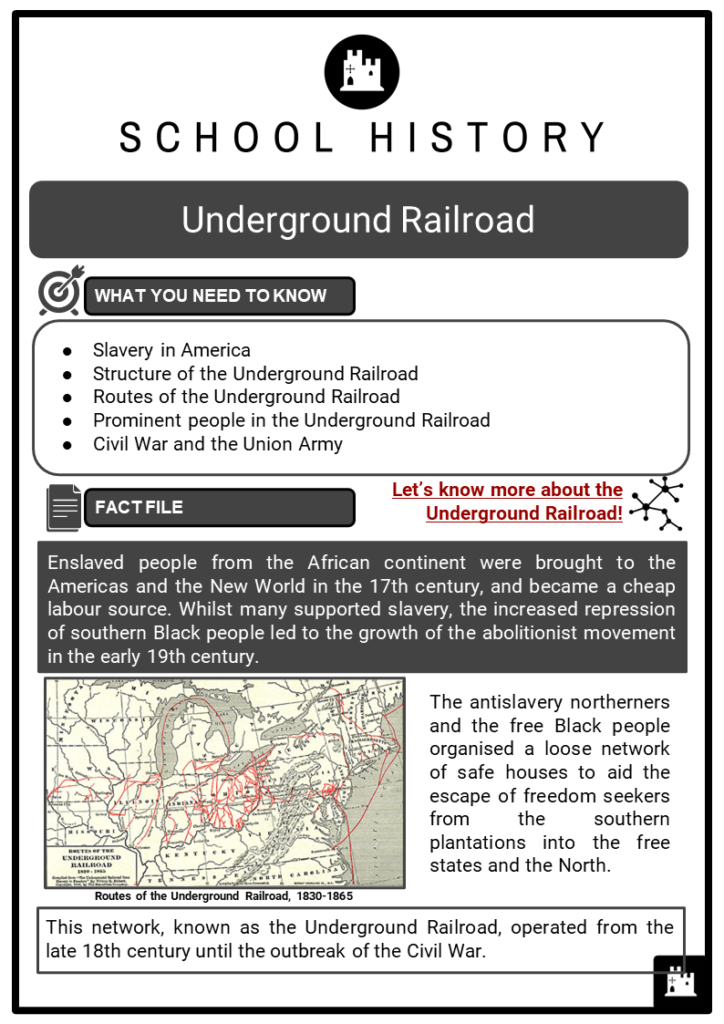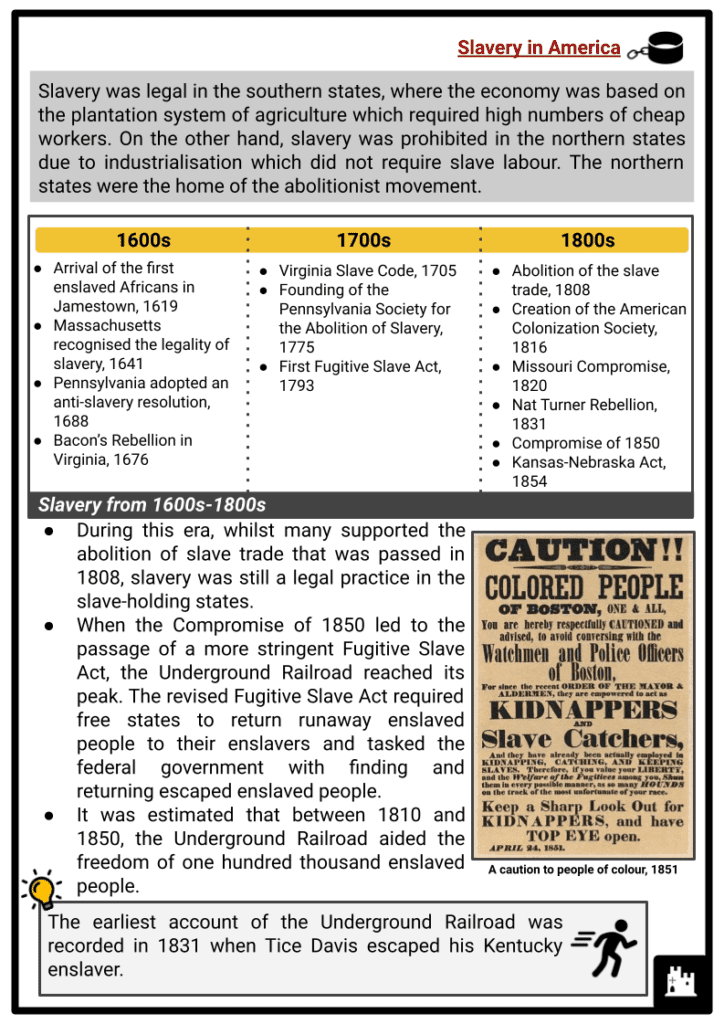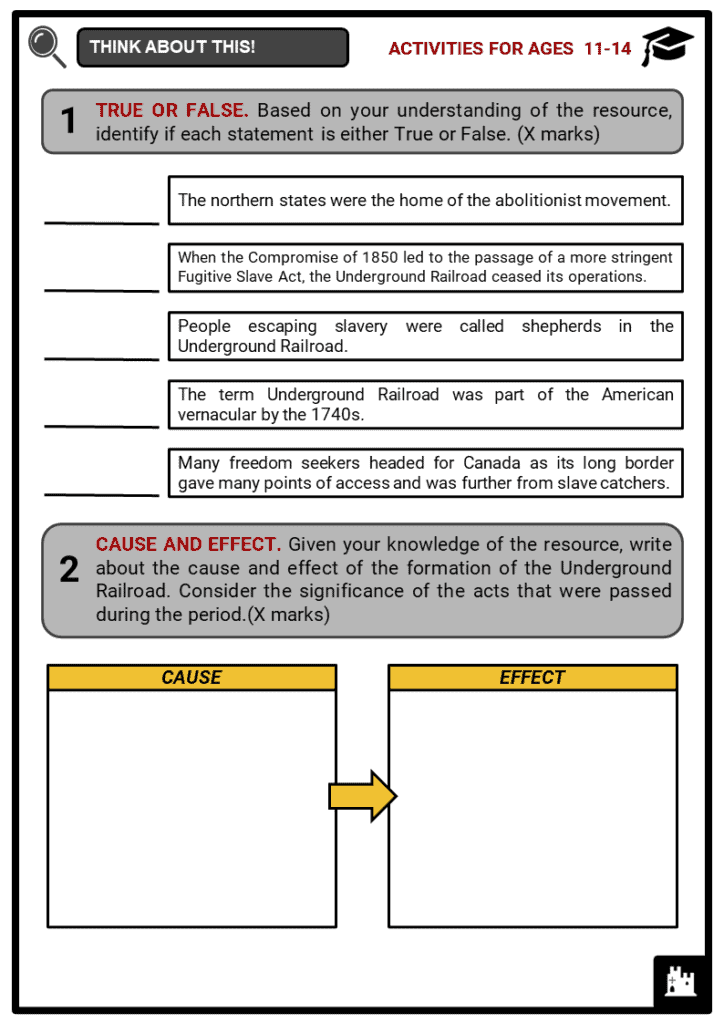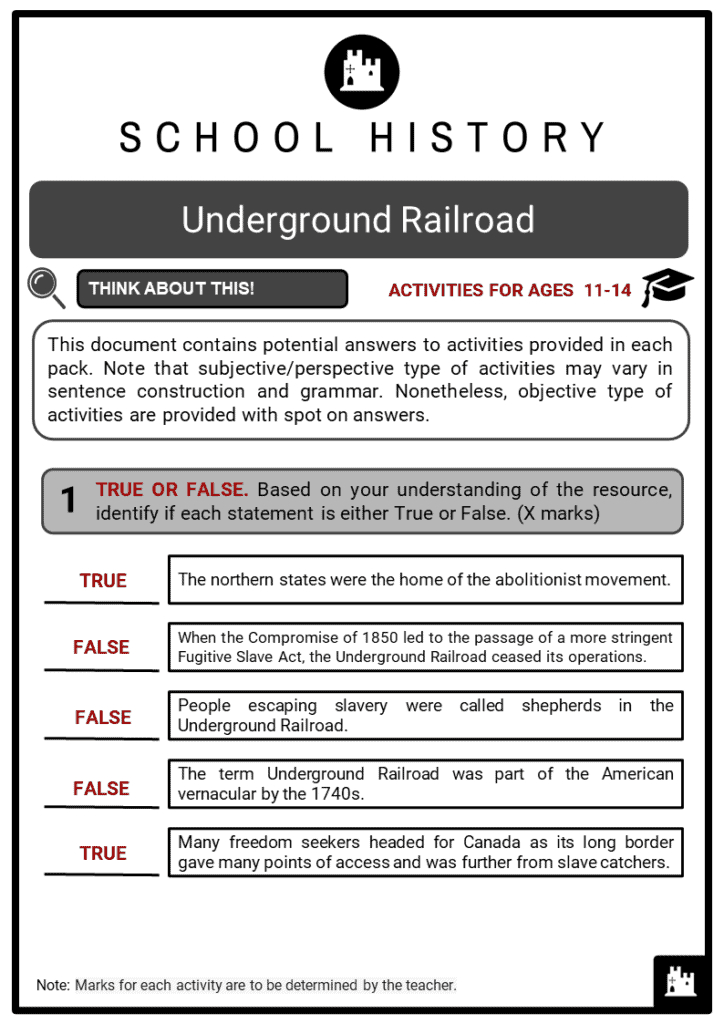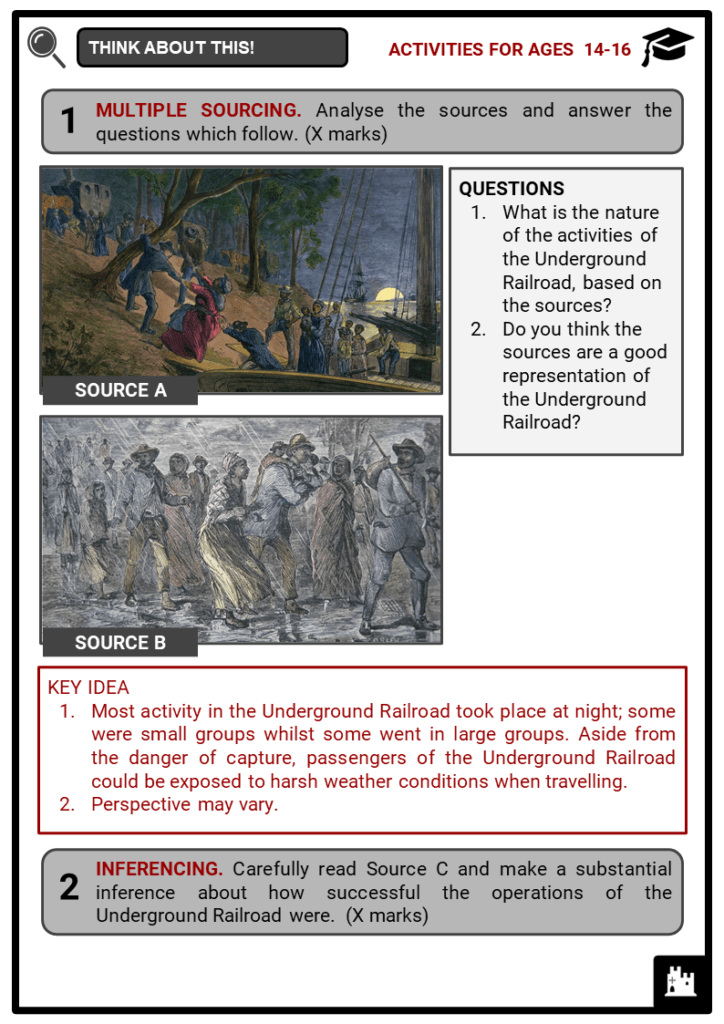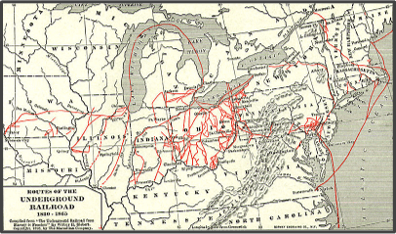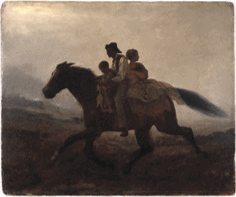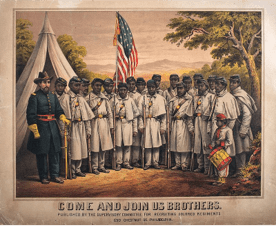Download Underground Railroad Worksheets
Do you want to save dozens of hours in time? Get your evenings and weekends back? Be able to teach Underground Railroad to your students?
Our worksheet bundle includes a fact file and printable worksheets and student activities. Perfect for both the classroom and homeschooling!
Table of Contents
Add a header to begin generating the table of contents
Summary
- Slavery in America
- Structure of the Underground Railroad
- Routes of the Underground Railroad
- Prominent people in the Underground Railroad
- Civil War and the Union Army
Key Facts And Information
Let’s know more about the Underground Railroad!
- Enslaved people from the African continent were brought to the Americas and the New World in the 17th century, and became a cheap labour source. Whilst many supported slavery, the increased repression of southern Black people led to the growth of the abolitionist movement in the early 19th century.
- The antislavery northerners and the free Black people organised a loose network of safe houses to aid the escape of freedom seekers from the southern plantations into the free states and the North.
- This network, known as the Underground Railroad, operated from the late 18th century until the outbreak of the Civil War.
Slavery in America
- Slavery was legal in the southern states, where the economy was based on the plantation system of agriculture which required high numbers of cheap workers. On the other hand, slavery was prohibited in the northern states due to industrialisation which did not require slave labour. The northern states were the home of the abolitionist movement.
- 1600s
- Arrival of the first enslaved Africans in Jamestown, 1619
- Massachusetts recognised the legality of slavery, 1641
- Pennsylvania adopted an anti-slavery resolution, 1688
- Bacon’s Rebellion in Virginia, 1676
- 1700s
- Virginia Slave Code, 1705
- Founding of the Pennsylvania Society for the Abolition of Slavery, 1775
- First Fugitive Slave Act, 1793
- 1800s
- Abolition of the slave trade, 1808
- Creation of the American Colonization Society, 1816
- Missouri Compromise, 1820
- Nat Turner Rebellion, 1831
- Compromise of 1850
- Kansas-Nebraska Act, 1854
- Slavery from 1600s-1800s
- During this era, whilst many supported the abolition of slave trade that was passed in 1808, slavery was still a legal practice in the slave-holding states.
- When the Compromise of 1850 led to the passage of a more stringent Fugitive Slave Act, the Underground Railroad reached its peak. The revised Fugitive Slave Act required free states to return runaway enslaved people to their enslavers and tasked the federal government with finding and returning escaped enslaved people.
- It was estimated that between 1810 and 1850, the Underground Railroad aided the freedom of one hundred thousand enslaved people.
- The earliest account of the Underground Railroad was recorded in 1831 when Tice Davis escaped his Kentucky enslaver.
Structure of the Underground Railroad
- The Underground Railroad was a network of routes, places, and people that helped enslaved people in the slave-holding southern states to runaway to the North. This network was neither underground nor a railroad, since underground railroads only came to existence in 1863, but it served the same purpose of transporting people long distances.
- The abolitionist sympathisers maintained the Underground Railroad, which had meeting points, secret routes, transportation and safe houses.
- Participants organised small independent groups and would move from station to station.
- Communication was through word of mouth.
- Terminology
- Underground Railroad was often called a gospel train or freedom train.
- Stations, depots, or safe-houses were private homes, barns, churches (under the floor), schoolhouses and businesses.
- Station masters were in charge of hiding the enslaved people.
- People escaping slavery were called passengers and those who had arrived at the stations were called cargo.
- People who helped enslaved people find the railroad were called shepherds or agents.
- Guides were called conductors.
- Financial benefactors who provided supplies and money for assistance were known as stockholders.
- Canada was referred to as the Promised Land or Heaven whilst the Ohio River was known as the River Jordan.
- Who were the participants of the Underground Railroad?
- The Quakers are believed to be the first organised group to aid the escape of enslaved people.
- Quaker abolitionist Isaac T. Hopper established a network in Philadelphia in the early 1800s, which helped enslaved people on the run.
- At the same time, abolitionist groups were formed by Quakers in North Carolina, in which routes and shelters were set up for people escaping enslavement.
- The term Underground Railroad was part of the American vernacular by the 1840s.
- Whilst some of the participants were part of an organised group, most worked alone.
- Participants were from many occupations, income levels and backgrounds, including free-born Blacks, White abolitionists, Native Americans, former enslaved persons, church clergy and their congregations in the North.
- The participation of free and formerly enslaved Blacks in the network was key, for without it there was a slim chance to sneak into the plantation to help the freedom seekers.
- Since the Blacks (conductors) would pretend to be enslaved so they could enter the plantation, they were putting their lives on the line for the cause.
- When did the escapes take place?
- Due to the danger associated with capture, most of the activity was conducted at night. Safe-houses were often distanced 16-19 kilometres from each other.
- The freedom seekers would stop and rest at the stations during the day and the station masters would be informed to prepare to receive the enslaved people.
- When the network became powerful, much of its activity was done in broad daylight.
- It is thought that quilt designs were used to signal and direct enslaved people to escape routes, but there is not enough evidence to support such a claim.
Routes of the Underground Railroad
- Most enslaved people helped by the network came from border states such as Virginia, Maryland and Kentucky. In the southern states (especially in the Deep South where capturing freedom seekers became a lucrative business), hiding places were fewer and escape was more dangerous.
- Many of the well-used routes headed west through Ohio to Indiana and Iowa whilst others stretched north through Pennsylvania and into New England or through Detroit on their way to Canada.
- Many freedom seekers headed for Canada as its long border gave many points of access and was further from slave catchers, beyond the reach of the Fugitive Slave Acts.
- More importantly, Canada offered the enslaved people the freedom that was taken from them in slave-holding states. They were given the freedom to live where they wanted, sit on juries, run for public office and more.
- To aid more freedom seekers, some Underground Railroad operators based themselves in Canada where further assistance for settling in was made available. Whilst support and freedom was given to the formerly enslaved people, discrimination and overt racism made life difficult in Canada.
- R. 1635 - National Underground Railroad Network to Freedom Act of 1998 authorised the United States National Park Service to establish the National Underground Railroad Network to Freedom program to identify associated sites, preserve them and popularise the Underground Railroad and the people involved in it.
Prominent people in the Underground Railroad
- William Still, sometimes referred to as the Father of the Underground Railroad, was a prominent Philadelphia citizen whose parents were formerly enslaved people in New Jersey.
- He kept a careful record of his participation in the Underground Railroad. He offered one of the clearest accounts of network’s activity at the time through The Underground Railroad: Authentic Narratives and First-Hand Accounts that was published in 1872.
- Harriet Tubman was the most popular conductor for the Underground Railroad.
- Born Araminta Ross, she escaped a plantation in Maryland with two of her brothers and took the name Harriet in 1849.
- She returned to the plantation on many occasions to rescue family members and others, and carried on guiding other freedom seekers to northern free states and Canada.
- She helped to free over 70 people in her 13 trips to the south, gaining her the name “Moses of Her People.”
- As a conductor, Harriet Tubman used spiritual music as coded messages to warn fellow travellers of danger or to signal a clear path.
- Frederick Douglass, formerly enslaved, hid freedom seekers in his home in Rochester, New York, helping 400 people to make their way to Canada.
- Reverend Jermain Loguen, formerly enslaved, helped 1,500 people go north.
- Robert Purvis, an antislavery activist and a Philadelphia merchant, formed the Vigilance Committee in 1838.
- Josiah Henson, formerly enslaved and a railroad operator, established the Dawn Institute in Ontario in 1842 to help successful freedom seekers in Canada to learn much-needed work skills.
- Louis Napoleon, formerly enslaved and New York City-based, was a key figure who guided enslaved people he found at the docks and train stations.
- John Parker, a free black man in Ohio, was a foundry owner who took a rowboat across the Ohio River to help people cross.
- Gerrit Smith, a millionaire who twice ran for president, was an abolitionist who in 1841 purchased an entire family of enslaved people from Kentucky and set them free.
- Levi Coffin, a Quaker from North Carolina, an active leader of the Underground Railroad in Indiana and Ohio, was unofficially known as the "President of the Underground Railroad” after helping around 3,000 enslaved people. His house was used as a safe-house in the network.
- John Brown was an abolitionist and a conductor on the Underground Railroad.
- He formed the United States League of Gileadites, which was devoted to helping people escaping enslavement get to Canada.
- He led a raid on Harpers Ferry to create an armed force that would make its way into the Deep South and free slaves by gunpoint.
- Brown’s men were defeated, and he was hanged for treason in 1859.
Civil War and the Union Army
- When the Civil War broke out in 1861, the Underground Railroad stopped its operations.
- In reality, the network deliberately moved its operations aboveground by supporting the Union effort against the Confederacy.
- Many Black people, both free and enslaved, fought for the Union Army.
- Over the course of the war, 178,895 were coloured troops (out of 2,128,948 men who enlisted in the Union Army.)
- The Union victory in the Civil War on 6 December 1865 led to the Thirteenth Amendment to the Constitution, which outlawed slavery.
- Thousands of formerly enslaved people in Canada moved back to the American South after the Civil War ended.
Image sources:
- https://upload.wikimedia.org/wikipedia/commons/thumb/5/51/Undergroundrailroadsmall2.jpg/800px-Undergroundrailroadsmall2.jpg
- https://upload.wikimedia.org/wikipedia/commons/0/06/Brooklyn_Museum_-_A_Ride_for_Liberty_--_The_Fugitive_Slaves_-_Eastman_Johnson_-_overall.jpg
- https://upload.wikimedia.org/wikipedia/commons/thumb/4/40/Come_and_Join_Us_Brothers%2C_by_the_Supervisory_Committee_For_Recruiting_Colored_Regiments.jpg/800px-Come_and_Join_Us_Brothers%2C_by_the_Supervisory_Committee_For_Recruiting_Colored_Regiments.jpg

